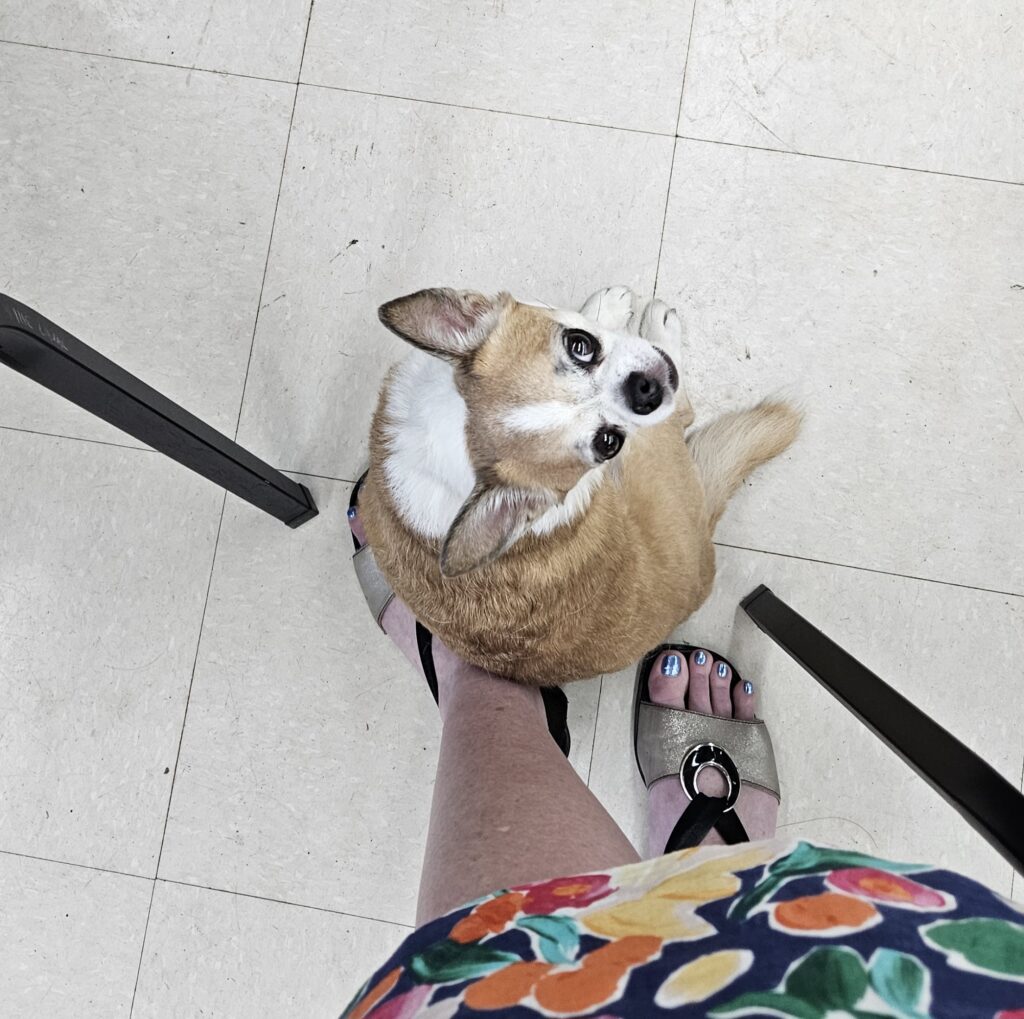It’s been a busy week, since the end of the group at show of the Women’s Art Society of Montreal (WASM) in Old Montréal last Saturday. To start, I’m preparing for two other upcoming group exhibitions, which open soon – on consecutive days. The “Art Expo d’art” of the Artists Circle of the West Island opens for two weeks on October 3, at the City of Montréal’s Pierrefonds Cultural Centre. Then the three-month “Fall & Winter Nature Exhibition” at the Trestler House national historic site (built in 1798), opens on October 4, 2024.
On Monday I was in meetings for two upcoming art-related chronic pain projects, for which I’m a Patient Partner; one as a committee member, the other as a co-presenter. Both are linked to my Art Despite Pain initiative, which uses my paintings to raise awareness of pain conditions while encouraging others living with persistent pain to try creative pursuits for pain-management. Stay tuned for details of both these events; one is “PAINtalks 2024” in November, and the other will be next year.
On Tuesday it was back to my ‘patient life’, with the morning at a specialist medical clinic for the second of my two rare diseases. The first of my rare conditions is Complex Regional Pain Syndrome (CRPS), formerly called Reflex Sympathetic Dystrophy (RSD). An autoimmune and neuro-inflammatory disease, CRPS has caused my Mild Cognitive Impairment (MCI), occasional full-body autoimmune fatigue, and the multiple localized symptoms in my right hand and arm; high-impact (severe) chronic pain, bone, joint, and skin issues, along with unpredictable spasms and tremors – which making watercolour even more of a challenge!
My second rare disease is Fibromuscular Dysplasia (FMD), which doesn’t cause pain but is considered more dangerous. FMD affects the arteries – primarily the carotids on each side of the neck, the abdominal aorta leading to the heart, and the renal arteries to the kidneys – and puts me at increased risk of aneurysm, spontaneous coronary artery dissection (SCAD), and stroke.
For this condition I have frequent monitoring by a cardiologist-internist, take several additional medications, and try even more than usual to find the beauty and joy in each day!
On that note, the better part of last week was spent in a 3-day watercolour painting Master-Class – in person – with the brilliant American artist and instructor Thomas W. Schaller. It began Wednesday morning, and wound up at 1700 on Friday, at the Atelier d’aquarelle le Partage in Laval Québec (just north of Montréal). This was the marquee event to celebrate the 40th anniversary of this local watercolour group, and I feel exceedingly lucky to have been able to participate. Thomas is a truly encouraging, generous, and kind artist and teacher, while his furry little buddy Otis brought his own enthusiasm – for treats and doggy ear-rubs.


Each morning Thomas gave one or two painting demonstrations, starting with a discussion of his reference-photo in terms of what he’d adjust to better meet his conceptualization of a particular scene and emotion. Next he’d create a value-study, and only then sketch his plan onto watercolour paper. This MasterClass considered the planning of each painting at a much more conceptual level than what I’ve actively considered before, and I really enjoyed Thomas’ descriptions of his thought processes while planning a painting.
Many of his statements struck chords for me, including these:
– “Painting is a solitary language”
– “I always want my paintings to be about something… like an emotional experience (imagined or based on personal experience). Think of the question: “What does it make you feel?”


My paintings from this workshop weren’t very good, but that’s okay as I was trying new techniques and learning quite a lot – and I already knew that my cognitive issues and pain would likely worsen throughout the day. My overall goal, for any art class or workshop, is to learn something new rather than to create an exhibition-quality painting. And, to be honest, that tends to be what most instructors advise at the outset – including Thomas – “don’t plan to create any masterpieces, the idea is to learn and try new things!”
With the many symptoms of my two different rare diseases, it’s often difficult for me to paint at all in the afternoons; the chronic neuropathic pain in my right hand and arm, for example, tends to worsen throughout the day – as do my cognitive issues. So I was happy to be able to paint at all!
Although I haven’t been home to do any painting since this workshop ended, I’m already looking forward to trying some of what I’ve learned when I get back to my easel again.
On the last day I was relatively happy with how far I’d gotten on that day’s painting – but working from my own photo rather than copying the piece that Thomas had demonstrated – so I added it to the pile of workshops paintings for Thomas’ comments. It was a true pleasure to hear his suggestions, and the kindness that he showed by noting that I’d “kept going” despite pain and cognitive issues. Shown here is my very rough planning-sketch, for my photo of an old railway bridge being reclaimed by nature up in Hudson Québec, along with Thomas commenting on my work-in-progress painting.


In the meantime, happy first day of Autumn – and all the best for this beautiful time of colourful foliage in much of Canada and the United States! Thanks so much for stopping by, and feel free to comment over on Instagram or Twitter/X; I’ve had to disable the blog Comments as there was too much spam for my cognitive issues to keep up with – but I do love to hear from you. Keep well, and look after yourself.

